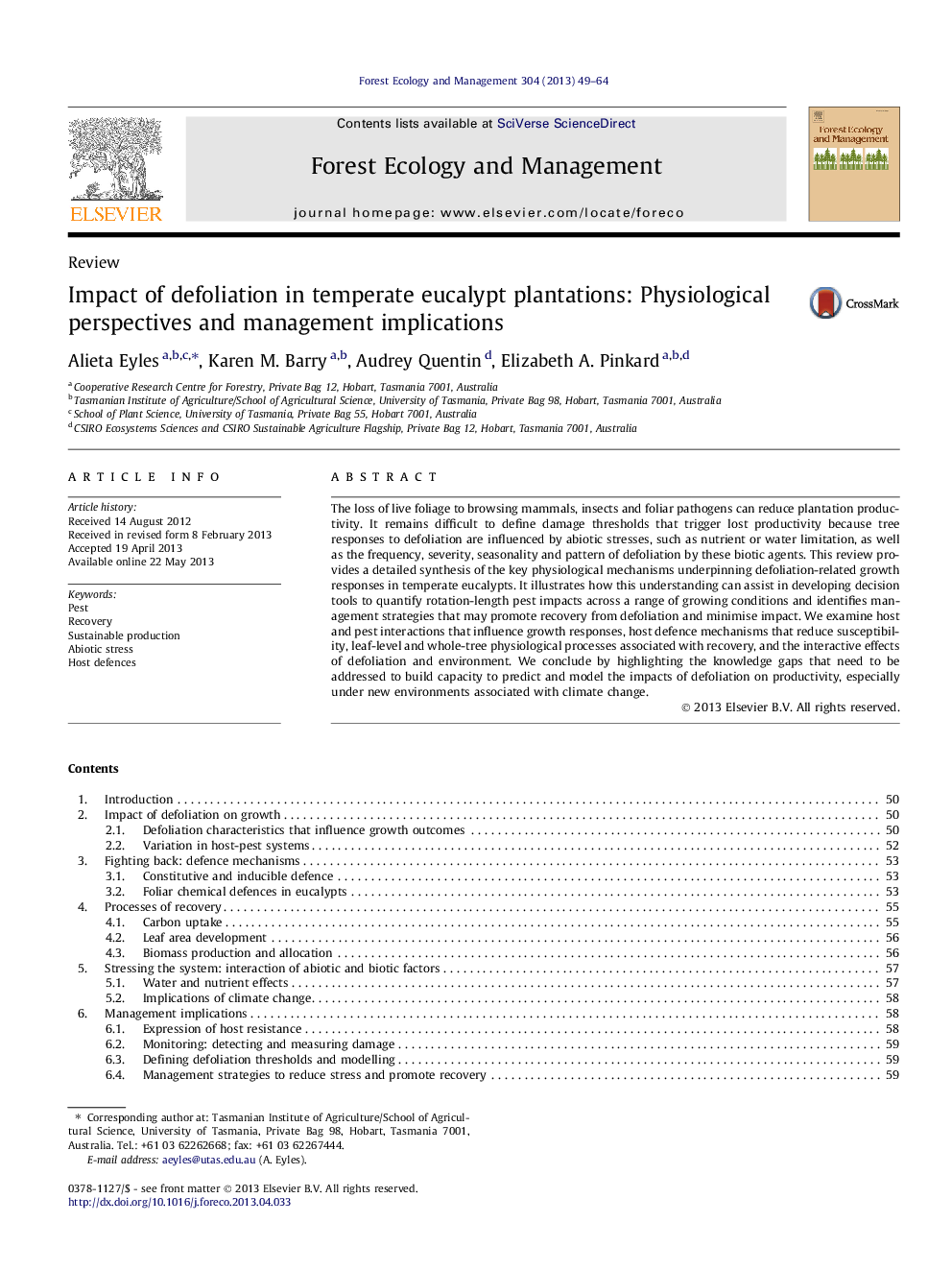| Article ID | Journal | Published Year | Pages | File Type |
|---|---|---|---|---|
| 6544195 | Forest Ecology and Management | 2013 | 16 Pages |
Abstract
The loss of live foliage to browsing mammals, insects and foliar pathogens can reduce plantation productivity. It remains difficult to define damage thresholds that trigger lost productivity because tree responses to defoliation are influenced by abiotic stresses, such as nutrient or water limitation, as well as the frequency, severity, seasonality and pattern of defoliation by these biotic agents. This review provides a detailed synthesis of the key physiological mechanisms underpinning defoliation-related growth responses in temperate eucalypts. It illustrates how this understanding can assist in developing decision tools to quantify rotation-length pest impacts across a range of growing conditions and identifies management strategies that may promote recovery from defoliation and minimise impact. We examine host and pest interactions that influence growth responses, host defence mechanisms that reduce susceptibility, leaf-level and whole-tree physiological processes associated with recovery, and the interactive effects of defoliation and environment. We conclude by highlighting the knowledge gaps that need to be addressed to build capacity to predict and model the impacts of defoliation on productivity, especially under new environments associated with climate change.
Related Topics
Life Sciences
Agricultural and Biological Sciences
Ecology, Evolution, Behavior and Systematics
Authors
Alieta Eyles, Karen M. Barry, Audrey Quentin, Elizabeth A. Pinkard,
